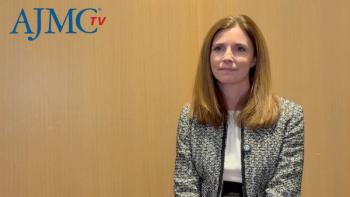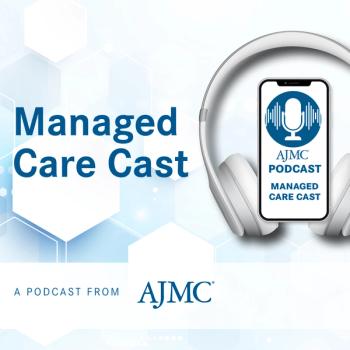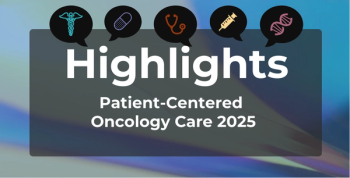
The American Journal of Managed Care
- July 2025
- Volume 31
- Issue 7
- Pages: e183-e190
Prevalence and Inclusiveness of Pay-for-Performance Incentives for HPV Vaccination
Key Takeaways
This article examines the prevalence of pay-for-performance incentives to promote human papillomavirus vaccination and other quality metrics as reported by frontline clinical staff.
ABSTRACT
Objectives: We examine the prevalence of pay-for-performance (P4P) incentives to promote human papillomavirus (HPV) vaccination and eligibility for P4P incentives as reported by clinical staff.
Study Design: A 2022 survey of primary care clinical staff in the US who provided HPV vaccination to children aged 9 to 12 years (N = 2527; response rate, 57%).
Methods: The primary outcome was a mutually exclusive categorical variable for the type of P4P quality metrics used in the past year: HPV vaccination, other pediatric vaccinations, other quality metrics, or none. The secondary outcome was an indicator variable for whether the respondent was, or would be, eligible for P4P incentives. We adjusted logistic models for clinical staff and clinic characteristics.
Results: Only 8% (n = 193) of respondents reported use of P4P incentives for HPV vaccination in their clinic. Clinics that were part of a health care system were more likely to have used P4P incentives for HPV vaccination (relative risk ratio [RRR] for respondents in systems of ≥ 5 clinics vs respondents not in systems, 2.06; 95% CI, 1.38-3.08), and clinics that saw more children were more likely to have used P4P incentives for HPV vaccination (RRR for respondents in clinics seeing ≥ 50 children vs clinics seeing 0-9 children per week, 2.64; 95% CI, 1.44-4.82). Physicians were more than twice as likely as other clinical staff to be eligible for P4P incentives (eg: OR for physician assistant, 0.40; 95% CI, 0.28-0.59).
Conclusions: Opportunities exist to extend P4P incentives in primary care to promote HPV vaccination.
Am J Manag Care. 2025;31(7):e183-e190.
Takeaway Points
- Evidence suggests that financial incentives to providers can increase delivery of vaccinations.
- We show that very few clinical staff involved in human papillomavirus (HPV) vaccination (8%) report that their clinics used pay-for-performance incentives targeting the HPV vaccine.
- Overall, 7 of 10 clinical staff members surveyed reported no experience with incentives for any quality targets.
- Compared with pediatric clinics, use of incentives was more likely in family medicine and other specialties, clinics that were part of systems, and clinics that saw more children.
- These findings help identify opportunities to extend pay-for-performance incentives in primary care to promote HPV vaccination.
Pay-for-performance (P4P), which ties financial incentives to improvements in quality measures, is a leading example of the alternative payment models that have become more common in the US. The US health care system is slowly moving away from fee-for-service (FFS) payments, which reward high utilization, to reimbursement strategies that reward health care professionals who provide high-value care.1,2 Led by CMS, payers have begun using alternative payment models, such as P4P, to more closely link payment for services to quality of care.1,3,4 Unlike other quality measures targeted by P4P models that may suffer from overprovision under FFS (eg, imaging, readmissions), FFS incentives for vaccination are aligned with quality goals.5 Vaccine delivery is discreet and directly billable. It is also true that vaccination rates can work well as quality targets for P4P methods because they are routinely measured, are influenced by providers, and can be accomplished in a small number of visits.6-9 The literature suggests that P4P financial incentives for providers increase delivery of other childhood and adult immunizations.7,10-16 However, little is known about the extent to which P4P is being used in addition to FFS for vaccines, especially for human papillomavirus (HPV).
HPV vaccination could eliminate 32,100 cancers each year in the US.17 Although rates of HPV vaccination have increased in the US in the past decade, as of 2022, only an estimated 63% of adolescents aged 13 to 17 years were fully vaccinated.18 Thus, even with FFS incentives to deliver vaccines, the HPV vaccine is still underprovided. P4P incentives tied to HPV vaccination rate targets could help increase HPV vaccination.
However, P4P will only work if the financial incentives are relevant to frontline clinical staff. This study examines the extent to which P4P incentives are used to promote HPV vaccination as reported by clinical staff. Our data come from a national survey of HPV vaccine providers, including all clinical staff with a role in vaccination. We also report clinical staff’s perceptions of who is, or would be, eligible to receive P4P incentives by clinical staff role. The results from this study will help identify opportunities to use P4P to increase uptake of the HPV vaccine.
METHODS
Survey Participants
We conducted a US survey of clinical staff working in primary care clinics that provided HPV vaccination to children (N = 2527).19 WebMD Market Research recruited participants through its Medscape Network. Respondents (1) were certified to practice in the US; (2) practiced as a physician, physician assistant (PA), nurse practitioner, advanced practice nurse (APN) including nurse practitioner, registered nurse (RN), licensed practical/vocational nurse (LPN/LVN), medical assistant (MA), or certified nursing assistant (CNA); (3) worked in pediatrics, family medicine, or general medicine specialties; and (4) had a role in HPV vaccination for children aged 9 through 12 years.
The survey was given in the field from May through July 2022. After providing informed consent, respondents completed the survey online. Upon completion, respondents received a $30 to $45 honorarium, depending on their clinical training. This study was approved by the University of North Carolina at Chapel Hill Institutional Review Board.
Outcome Variables
Before answering any questions about financial incentives, we provided respondents the following definition: “Financial incentives are monetary benefits paid by insurers, systems, or clinics to primary care professionals when they meet agreed-upon quality metrics.” Respondents were asked, “In the past year, have financial incentives been used at your clinic for...” and were then asked to check all that apply from the following list: HPV vaccination, other pediatric vaccinations, other pediatric quality metrics, other adult quality metrics, or none. For the primary outcome, we recoded responses into a mutually exclusive categorical variable (hereafter, incentive type): HPV vaccination (HPV vaccination selected in any combination), other pediatric vaccinations (other pediatric vaccinations selected in any combination except with HPV vaccination), other quality metrics (other pediatric quality metrics or other adult quality metrics selected but not HPV vaccination or other pediatric vaccinations), or none.
The secondary outcome was an indicator variable for whether the respondent was, or would be, eligible for a financial incentive. Respondents who reported that their clinic used financial incentives for HPV vaccination were asked which clinical staff were eligible to receive the incentive: physicians, PAs, APNs, RNs, CNAs/MAs, or not sure. Respondents who reported that their clinic did not use financial incentives for HPV vaccination were asked who would be eligible for incentives if they were used in their clinic with the same response categories as above. Based on each respondent’s reported training, we created an indicator for whether they were, or would have been, eligible for a financial incentive for HPV vaccination.
Covariates
Statistical models were adjusted for characteristics of the clinic and clinical staff. Clinic characteristics were rurality (rural [omitted reference] or nonrural determined using Rural-Urban Continuum Codes of the clinic’s county), specialty (pediatrics [omitted reference], family medicine, other), number of clinics in the system (not system [omitted reference], 1-4 clinics, ≥ 5 clinics), ownership structure (solo practice [omitted reference], group practice, hospital or academic institution, federally qualified health center or community health center, other), number of providers (1 [omitted reference], 2-5, 6-10, ≥ 11 physicians, PAs, or APNs), percent of children using the Vaccines for Children Program (< 25% [omitted reference], 25%-49%, 50%-74%, 75%-100%), and the number of patients aged 9 to 12 years seen in a typical week (0-9 [omitted reference], 10-24, 25-49, ≥ 50). Respondent characteristics included training (physician [omitted reference], PA, APN, nurse [RN, LPN, LVN], assistant [MA, CNA]), gender (woman [omitted reference], man, other), race/ethnicity (White [omitted reference]; Hispanic, Latino, or Spanish; Black or African American; Asian; other or prefer not to say; multiple), and years in practice (continuous). Race/ethnicity categories represented race as a social construct, were self-reported, and were included to explore potential disparities in eligibility and receipt of financial incentives.
Statistical Analysis
We estimated a multinomial logistic regression model for incentive type with “none” as the reference category. We estimated a logistic regression model for whether the respondent was, or would be, eligible for an HPV vaccine financial incentive. All statistical analyses were performed using Stata 15.1 (StataCorp LLC).
RESULTS
The survey response rate was 57% (N = 2527),20 and the median completion time was 19 minutes. Only 8% (n = 193) of respondents reported experience with P4P incentives for HPV vaccination in their clinics (Table 1 [
In adjusted analyses, 3 clinic characteristics were significantly associated with reported use of an incentive type: clinic specialty, health care system, and number of patients aged 9 to 12 years (Table 2 [
Two respondent characteristics—training and years in practice—were significantly associated with reported use of an incentive type (Table 2). Regarding training, the probability for each incentive type compared with no incentives was lower for APNs relative to physicians (RRR for HPV vaccination, 0.52; 95% CI, 0.30-0.90; RRR for other pediatric vaccinations, 0.25; 95% CI, 0.12-0.52; and RRR for other quality metrics, 0.64; 95% CI, 0.46-0.90). Relative to physicians, nurses had lower probability for incentives for HPV vaccination (RRR, 0.53; 95% CI, 0.32-0.86) and other quality metrics (RRR, 0.46; 95% CI, 0.32-0.66). There were no significant differences in the relative probability of incentive types for PAs and CNAs/MAs compared with physicians. Regarding years in practice, more years in practice was associated with a lower probability of incentives for HPV vaccination (RRR, 0.98; 95% CI, 0.97-1.00) but was not significantly associated with the probability of other incentive types.
The secondary outcome was an indicator variable for whether the respondent was, or would be, eligible for a financial incentive. The following results use ORs from logistic regression. Respondents without direct experience with financial incentives were twice as likely to report they would be eligible for incentives (OR, 1.99; 95% CI, 1.60-2.48) (Table 3 [
DISCUSSION
This study, one of the first on the use of P4P incentives for HPV vaccination, found that few clinical staff reported use of P4P incentives for the HPV vaccine (8%) and only slightly more for other quality measures among clinics delivering childhood and adolescent vaccines. Overall, 7 of 10 clinical staff surveyed reported no experience with incentives. Use of incentives was higher in family medicine and other specialties (relative to pediatric clinics), clinics that were part of systems, and clinics that saw more children. Nurses, APNs, and clinical staff with more years in practice were less likely to report experience with incentives. Regarding eligibility for incentives, the most important predictor was training; physicians were more than twice as likely as other clinical staff to be eligible to receive P4P incentives. These findings suggest there is substantial opportunity to increase the use of P4P incentives to promote HPV vaccination.
Prior studies have shown that P4P financial incentives for providers increase delivery of other childhood and adult immunizations.7,10-16 This success may be attributable to 2 features that make immunizations ideal targets for P4P incentives. First, financial incentives are most effective when the incentivized behaviors are simple and easy to track.7,10 Completion of the HPV vaccine series requires decision-making at only 2 or 3 time points per patient, and these measures can be tracked using electronic health records that are already integrated into health care systems. Use of related quality measures, such as the Healthcare Effectiveness Data and Information Set Immunizations for Adolescents measure, is already pervasive in health care systems.21 Second, P4P incentives are most effective when there is room for improvement.7-9 Current rates of HPV vaccinations among adolescents fall well below the Healthy People 2020 goal of 80%.18,22 Despite these features, the effect of P4P financial incentives on HPV vaccination has not been evaluated.
The literature provides guidance for those interested in using P4P incentives from contexts other than the HPV vaccine. P4P incentives have been the most effective when targeting process measures (eg, vaccines delivered) rather than outcome measures (eg, cancers prevented)7,9; when incentives are directed at individuals or small teams7,9; when quality targets are absolute (eg, 80% HPV vaccination rate) rather than relative (eg, increase HPV vaccination rates by 10%)7; when the P4P program is designed in collaboration with providers and other stakeholders7,9; when incentives are clearly communicated to providers10,23; when the P4P program uses a positive, rather than competitive, approach9; when the P4P program uses a uniform structure across different payers9 ; and when the P4P program has support among medical leadership.10 Finally, the size and scope of the incentives are crucial for P4P success. This includes not only the dollars at stake for achieving the quality goal but also the clinic’s payer mix, which affects the proportion of patients for which the P4P is active.
This study’s main contribution to the literature is to document the use of P4P incentives for HPV vaccination and other quality metrics as reported by a national sample of frontline clinical staff. Our survey included all clinical staff with a role in HPV vaccination, including nurses, CNAs, and MAs. We also focused on the clinical staff’s perspective and knowledge of P4P incentives in their clinics, rather than reports from administration or management. This is crucial, as P4P incentives only work if frontline clinical staff are aware of them.
We observed that clinics that were part of systems and clinics that saw more patients were more likely to use P4P incentives. Although the cross-sectional survey was not able to identify why that was the case, several mechanisms are possible. Scale may contribute; systems for quality measurement and payment involve fixed costs that may be spread more easily in larger systems. Systems may also have payer contracts that encourage focus on quality improvement. Other management and workplace cultural differences, such as peer support or accountability, may also contribute to the patterns we observed.
Limitations
This study had limitations. Self-reports of incentives used in the past year may suffer from recall bias. It is possible that the implementation of incentives in P4P programs is higher but that frontline clinical staff are not aware of them. For example, clinics may be participating in multiple P4P programs or P4P programs with many competing goals, which makes strategic communication with frontline clinical staff more challenging. If clinic- and system-level participation in the P4P program is more prevalent but clinic staff are unaware, it would limit the potential effectiveness of such schemes. In addition, although our survey included a large, nationwide sample of clinical staff and had a high response rate, it may not be fully representative of the targeted US workforce. Regardless of these limitations, this study provides new data on the use of P4P incentives among pediatric and family practice vaccine providers.
CONCLUSION
P4P incentives may be a tool to increase HPV vaccination rates. This study documented that current use of incentives for HPV vaccination is rare. Future research can explore how existing P4P programs are perceived by clinical staff and their effectiveness for increasing HPV vaccination rates. Based on our results, P4P initiatives may put an increased focus on engaging more clinical staff beyond physicians in smaller clinics outside of larger systems.
Author Affiliations: Lineberger Comprehensive Cancer Center, University of North Carolina at Chapel Hill (JGT, KRB), Chapel Hill, NC; Department of Pediatrics, Penn State College of Medicine, The Pennsylvania State University (BF), Hershey, PA; Department of Health Policy and Management (JGT) and Department of Health Behavior (TLQ), Gillings School of Global Public Health, University of North Carolina at Chapel Hill, Chapel Hill, NC.
Source of Funding: This research was supported by the National Cancer Institute of the National Institutes of Health under Award Number P01CA250989.
Author Disclosures: The authors report no relationship or financial interest with any entity that would pose a conflict of interest with the subject matter of this article.
Authorship Information: Concept and design (JGT, KRB, BF); acquisition of data (JGT, KRB, TLQ); analysis and interpretation of data (JGT, BF); drafting of the manuscript (JGT); critical revision of the manuscript for important intellectual content (JGT, KRB, BF, TLQ); statistical analysis (JGT, TLQ); provision of patients or study materials (KRB); obtaining funding (JGT); administrative, technical, or logistic support (KRB); and supervision (JGT, KRB).
Address Correspondence to: Justin G. Trogdon, PhD, Department of Health Policy and Management, Gillings School of Global Public Health, Lineberger Comprehensive Cancer Center, University of North Carolina at Chapel Hill, 1101-B McGavran-Greenberg Hall, CB #7411, Chapel Hill, NC 27599-7411. Email: justintrogdon@unc.edu.
REFERENCES
1. Burwell SM. Setting value-based payment goals—HHS efforts to improve U.S. health care. N Engl J Med. 2015;372(10):897-899. doi:10.1056/NEJMp1500445
2. Rajkumar R, Conway PH, Tavenner M. CMS—engaging multiple payers in payment reform. JAMA. 2014;311(19):1967-1968. doi:10.1001/jama.2014.3703
3. Rosenthal MB. Beyond pay for performance—emerging models of provider-payment reform. N Engl J Med. 2008;359(12):1197-1200. doi:10.1056/NEJMp0804658
4. Joynt Maddox KE, Sen AP, Samson LW, Zuckerman RB, DeLew N, Epstein AM. Elements of program design in Medicare’s value-based and alternative payment models: a narrative review. J Gen Intern Med. 2017;32(11):1249-1254. doi:10.1007/s11606-017-4125-8
5. Avery G, Schultz J. Regulation, financial incentives, and the production of quality. Am J Med Qual. 2007;22(4):265-273. doi:10.1177/1062860607300564
6. Town R, Kane R, Johnson P, Butler M. Economic incentives and physicians’ delivery of preventive care: a systematic review. Am J Prev Med. 2005;28(2):234-240. doi:10.1016/j.amepre.2004.10.013
7. Eijkenaar F, Emmert M, Scheppach M, Schöffski O. Effects of pay for performance in health care: a systematic review of systematic reviews. Health Policy. 2013;110(2-3):115-130. doi:10.1016/j.healthpol.2013.01.008
8. Mendelson A, Kondo K, Damberg C, et al. The effects of pay-for-performance programs on health, health care use, and processes of care: a systematic review. Ann Intern Med. 2017;166(5):341-353. doi:10.7326/M16-1881
9. Van Herck P, De Smedt D, Annemans L, Remmen R, Rosenthal MB, Sermeus W. Systematic review: effects, design choices, and context of pay-for-performance in health care. BMC Health Serv Res. 2010;10:247. doi:10.1186/1472-6963-10-247
10. Kane RL, Johnson PE, Town RJ, Butler M. Economic incentives for preventive care. Evid Rep Technol Assess (Summ). 2004;(101):1-7.
11. Fairbrother G, Siegel MJ, Friedman S, Kory PD, Butts GC. Impact of financial incentives on documented immunization rates in the inner city: results of a randomized controlled trial. Ambul Pediatr. 2001;1(4):206-212. doi:10.1367/1539-4409(2001)001<0206:iofiod>2.0.co;2
12. Fairbrother G, Hanson KL, Friedman S, Butts GC. The impact of physician bonuses, enhanced fees, and feedback on childhood immunization coverage rates. Am J Public Health. 1999;89(2):171-175. doi:10.2105/ajph.89.2.171
13. Kouides RW, Bennett NM, Lewis B, Cappuccio JD, Barker WH, LaForce FM. Performance-based physician reimbursement and influenza immunization rates in the elderly. the Primary-Care Physicians of Monroe County. Am J Prev Med. 1998;14(2):89-95. doi:10.1016/s0749-3797(97)00028-7
14. Morrow RW, Gooding AD, Clark C. Improving physicians’ preventive health care behavior through peer review and financial incentives. Arch Fam Med. 1995;4(2):165-169. doi:10.1001/archfami.4.2.165
15. Hillman AL, Ripley K, Goldfarb N, Weiner J, Nuamah I, Lusk E. The use of physician financial incentives and feedback to improve pediatric preventive care in Medicaid managed care. Pediatrics. 1999;104(4 pt 1):931-935.
16. Ritchie LD, Bisset AF, Russell D, Leslie V, Thomson I. Primary and preschool immunisation in Grampian: progress and the 1990 contract. BMJ. 1992;304(6830):816-819. doi:10.1136/bmj.304.6830.816
17. Senkomago V, Henley SJ, Thomas CC, Mix JM, Markowitz LE, Saraiya M. Human papillomavirus-attributable cancers - United States, 2012-2016. MMWR Morb Mortal Wkly Rep. 2019;68(33):724-728. doi:10.15585/mmwr.mm6833a3
18. Pingali C, Yankey D, Elam-Evans LD, et al. Vaccination coverage among adolescents aged 13-17 years - national immunization survey-teen, United States, 2022. MMWR Morb Mortal Wkly Rep. 2023;72(34):912-919. doi:10.15585/mmwr.mm7234a3
19. Kahn BZ, Reiter PL, Kritikos KI, Gilkey MB, Queen TL, Brewer NT. Framing of national HPV vaccine recommendations and willingness to recommend at ages 9-10. Hum Vaccin Immunother. 2023;19(1):2172276. doi:10.1080/21645515.2023.2172276
20. Standard Definitions: Final Dispositions of Case Codes and Outcome Rates for Surveys. 9th ed. The American Association for Public Opinion Research; 2016. Accessed June 5, 2025.
21. Measures reported using electronic clinical data systems: immunizations for adolescents. In: State of Health Care Quality Report. National Committee for Quality Assurance; 2024. Accessed March 12, 2024.
22. Healthy People 2030 objectives: increase the proportion of adolescents who get recommended doses of the HPV vaccine — IID-08. Office of Disease Prevention and Health Promotion. Accessed March 12, 2024.
23. Thirumurthy H, Asch DA, Volpp KG. The uncertain effect of financial incentives to improve health behaviors. JAMA. 2019;321(15):1451-1452. doi:10.1001/jama.2019.2560
Articles in this issue
Newsletter
Stay ahead of policy, cost, and value—subscribe to AJMC for expert insights at the intersection of clinical care and health economics.








































